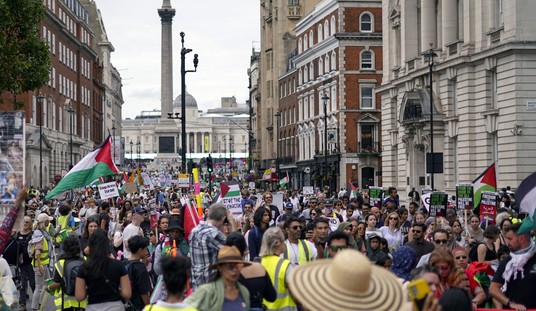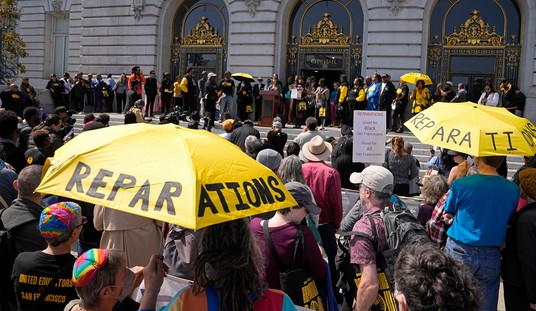Anti-scientific quackery from a doctor (and former Democratic candidate) who recently appeared on CNN to explain why Trump's south lawn acceptance speech was reckless, but crowded street protests were a-okay. Both were outdoors. Both lacked social distancing. But one was bad and the other was good, you must understand, because racism is also a public health crisis. So in the case of the demonstrations, the health concerns...cancel each other out, or something:
CNN guest Dr. Rob Davidson says that social distancing isn't as big of a concern at the March on Washington as it was last night at President Trump's speech because "this is a public health crisis they are marching against. Systemic racism has taken so many lives in this country" pic.twitter.com/OlrY3yMmin
— Daily Caller (@DailyCaller) August 28, 2020
And they wonder why so many people don't trust the "experts." Mask wearing at the protest was more prevalent than it was at the White House event, but another piece of the science that this doctor just glides right past is that shouting, singing and chanting are all viewed as behaviors that increase the likelihood of transmitting coronavirus. The Biden campaign slammed the president's speech as a "super spreader" event, but remained silent on the public health implications of the protests. In fairness, silence seems to be the Left's go-to move on uncomfortable and inconvenient realities. As for the Trump speech, I'm not terribly exercised over the fact that the White House was used as a backdrop for a partisan event. FDR delivered a nomination acceptance speech from that very house in 1940, so there's some precedent on that front:
Recommended
Norms are important. But let's also not forget that FDR accepted the Democratic nomination in 1940 from...the White House. PSA: History didn't start in 2016. pic.twitter.com/W2X7v8xv3m
— Philip Wegmann (@PhilipWegmann) August 28, 2020
Also, Trump only settled on the White House venue after two previous plans fell through. In the COVID era, strange and unusual decisions are being foisted upon us. Plus, the White House is an inherently political place. It's home to the highest-ranking politician in the country, whose team engages in politics and partisan messaging every single day. But the point about a lack of masks is more salient. Most in the crowd of attendees were not tested, and very few chose to wear the face coverings that were handed out. They were packed into seats that were set up with no distancing. The point about hypocrisy and selective outrage very much stands, but protests are different from organized events on the White House grounds because the latter represents officialdom. The Trump administration and campaign should be setting a better example than they did. They should be at least making some effort to abide by the administration's own guidance.
That's a legitimate knock and a bad look for Team Trump. But it's a non sequitur and pure hackery to pretend that crowded protests are just fine because of the message behind them. The virus doesn't care about the politics of the people who are spreading it. And since we're on the subject of the virus, I'll leave you with yet another illustration of an important reality we've been tracking -- namely, that southern states flattened the curve and had far less disastrous and lethal spikes than places like New York, whose singular failures were celebrated as a success story at the DNC:
From NYT, a look at the stunning differences between the death rates in New York City at virus peak and southern states at their (later) peak. https://t.co/K2ZnS2EVtj pic.twitter.com/d9qmyhVBg3
— Byron York (@ByronYork) August 28, 2020
And in case you missed it, it now appears as though quite a few positive COVID tests were effectively false positives:
Some of the nation’s leading public health experts are raising a new concern in the endless debate over coronavirus testing in the United States: The standard tests are diagnosing huge numbers of people who may be carrying relatively insignificant amounts of the virus. Most of these people are not likely to be contagious, and identifying them may contribute to bottlenecks that prevent those who are contagious from being found in time. But researchers say the solution is not to test less, or to skip testing people without symptoms, as recently suggested by the Centers for Disease Control and Prevention. Instead, new data underscore the need for more widespread use of rapid tests, even if they are less sensitive.
Abbott's rapid testing breakthrough could truly be a game-changer.

























Join the conversation as a VIP Member